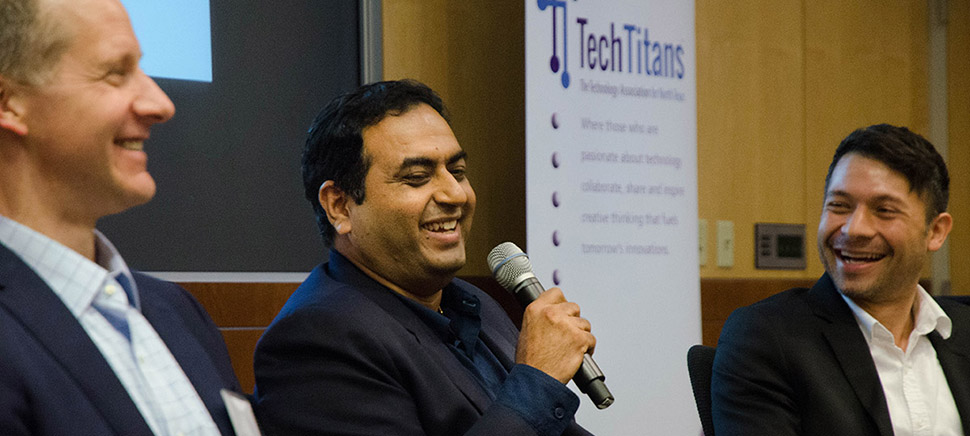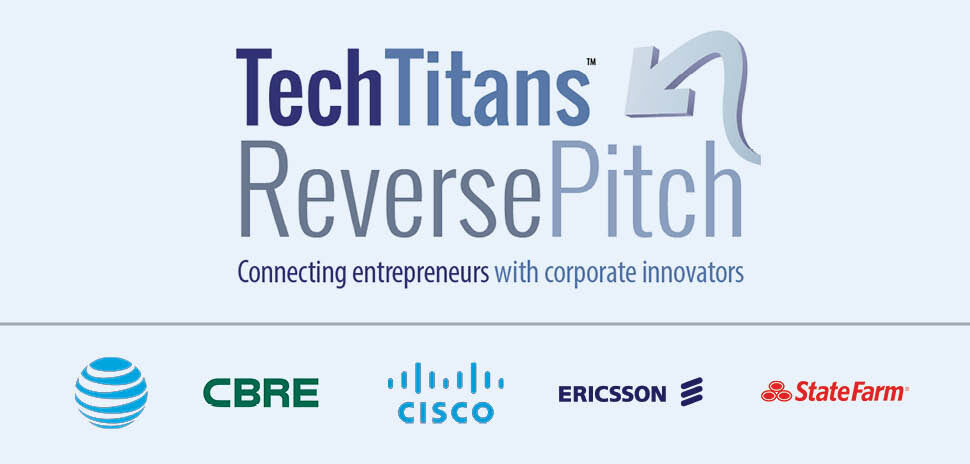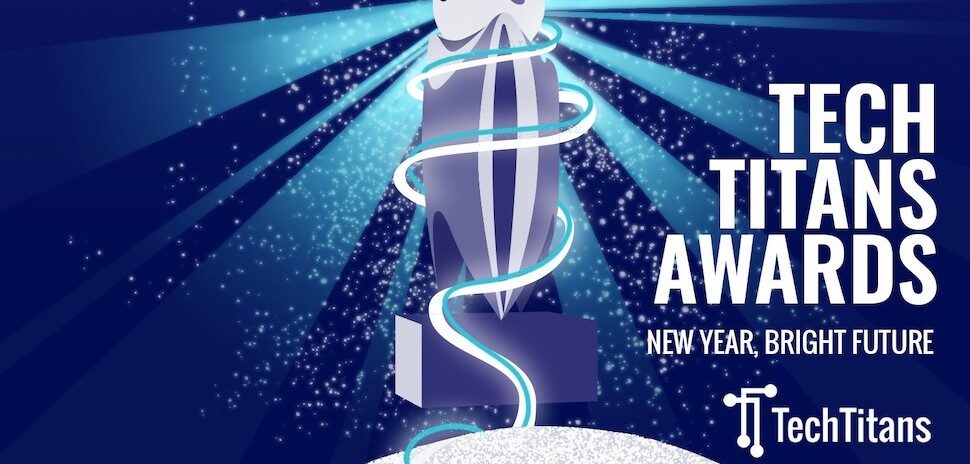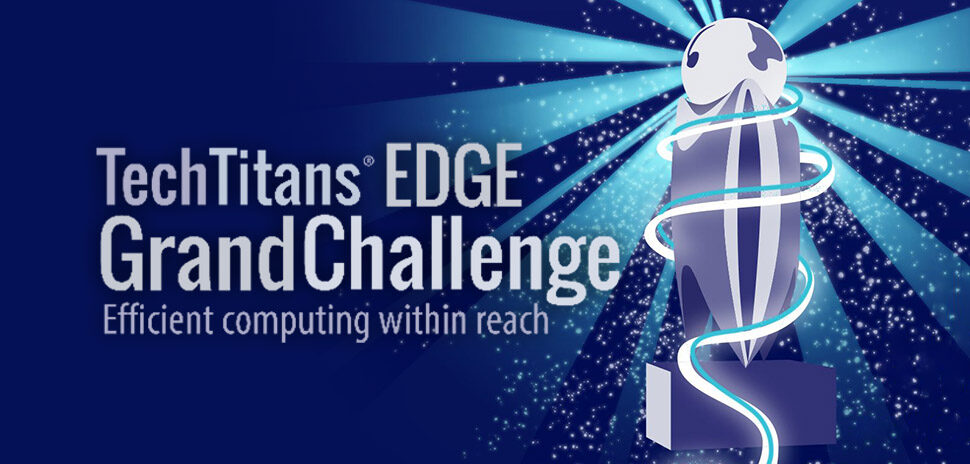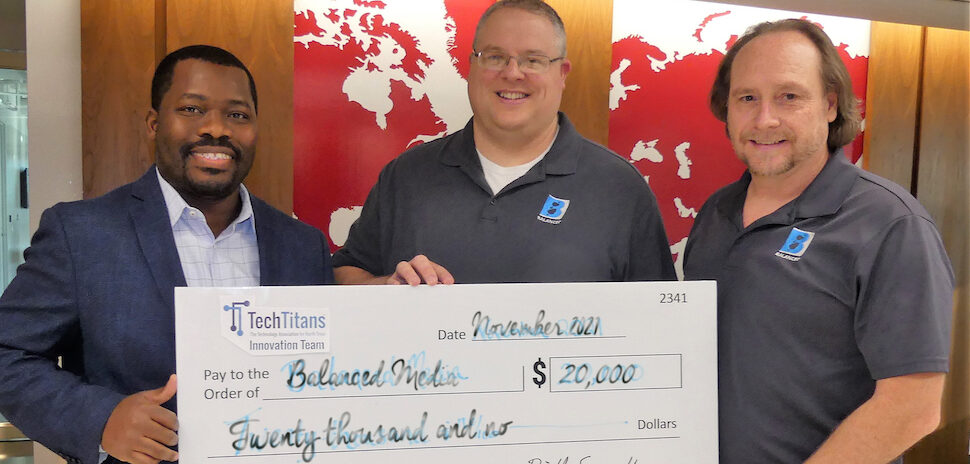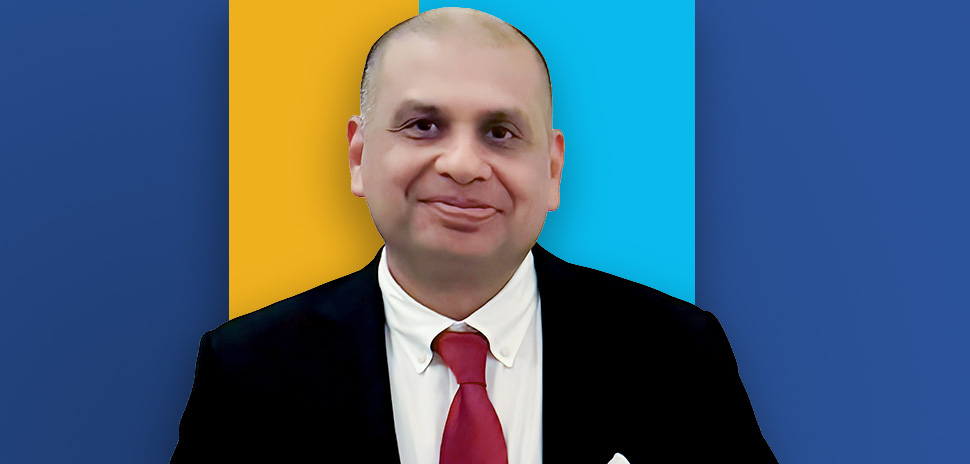A PACKED TI AUDITORIUM HEARD SPEAKERS, PANELISTS AT TECH TITANS’ REVERSE PITCH
At a traditional pitch, startups get a few minutes to tell potential investors why their product or service is worth funding. On Thursday, Tech Titans turned that scenario around with its first Reverse Pitch at the TI Auditorium on The University of Texas at Dallas campus.
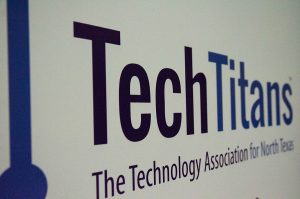
Photo by Hannah Ridings.
Instead, innovators and entrepreneurs spent the afternoon hearing pitches from major corporations about the areas in which they are looking for new ideas, products and partnerships.
Bill Sproull, president and CEO of Tech Titans, said the idea for a reverse started when Tech Titans heard about a similar event in Kansas City.
Sproull said that Tech Titans leaders thought, “if they can do it in Kansas City, why can’t we do it here?”
He said, “we thought we could reverse engineer the whole process.”
TECH TITANS REVERSE-ENGINEERED THE WHOLE PROCESS
That reverse-engineering led to an afternoon of information and tips for the packed audience of entrepreneurs, innovators, educators and interested people.
Much of the pitch centered on the Internet of Things, mostly the Industrial Internet of Things, where most of the speakers said the best opportunities lie for the biggest revenues and return on investment for major companies.

Dr. Paul Hain discusses the need for a new data system for health care providers at the UT Dallas Tech Titans Event. Photo by Hannah Ridings.
Keynotes speakers for the event were Shahid Ahmed, IoT thought leader for PricewaterhouseCoopers, and Tony Pereira, vice president of business development and strategic partnerships at Mitel.
Ahmed told the audience that there are six forces driving innovation in the industrial arena: Big data, Internet of Things, Configuration and Updates, Analytics, networking and connectivity, and prediction and detection of faults.
He said when all those elements come together in innovation, “it solves the human experience.”
Ahmed said that the Industrial Internet of Things (IIoT) is leading to major corporations changing their business models to incorporate it.
He cited General Electric’s use of sensors inside airplane jet engines to improve performance and prevent disruptive failures, and Rio Tinto Australia’s use of driverless trucks in its mine operations in Australia.
The trucks are operated from a control center 1,200 kilometers from the mine.
While the use of IIoT in manufacturing is a major area, Ahmed said that the services sector will be roughly $400 billion of the $1.7 trillion forecasted impact of IIot worldwide. He said many of the entrepreneurs in the room could find a lucrative niche in IIoT.
“We believe IoT has to be business outcome-based,” Ahmed said.
He told the audience that while the push for smart cities is important, about 45 percent of the nation’s major cities are bankrupt.
PRIVATE ENTERPRISE WILL NEED TO STEP UP
“Putting up the capital will require private enterprise to step up,” Ahmed said.
Pereira similarly said the IoT is where the future lies, and he said that for innovators “making communicating easy is paramount.”
Communicating should enable “collaboration quickly,” Pereira said.
“It’s no longer just a phone call,” he said.
“Today’s workforce is more mobile than ever,” Pereira said. “Mobile is shifting the way people work.”
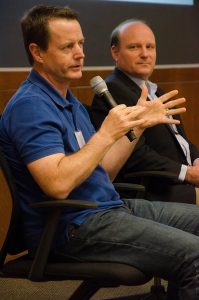
Craig Lee speaks about his work at AT&T Foundry at the UT Dallas Tech Titans Event. Photo by Hannah Ridings.
He said that Mitel works both with small and large companies and it’s constantly looking for innovative solutions from others or trying to create new ideas themselves.
Pereira said that 5G is about three years away, and that it will revolutionize the speed at which companies will be able to operate.
He said that startups should tell companies such as his which business segment they want to operate in and how their product can help accelerate a process or lead to cost savings.
Startups must know their market segment, their business segment, and their audience, Pereira said.
He said Mitel looks for outside ideas and innovation, because although the company has a lot of expertise, “we can’t do everything.”
The first panel will center on network infrastructure companies, and will include Bob Gessel, head of networking and technology strategy in North American for Nokia; Craig Lee, director of AT&T Foundry; John Shelnut, vice president and general manager, Cisco Ventures; Robert Regan, mergers and acquisitions for Nokia, and Warrant Westrup, IoT strategy for Verizon.
LOTS OF OPPORTUNITIES, PLENTY OF CHALLENGES
Gessel opened the panel by telling the audience that there is “a lot of opportunities to work with big companies, and a lot of challenges, too.”
He said, “You can’t underestimate the power of networking.”
Verizon is looking for innovations that fit within their “verticals,” that “we can build a subscription to,” Westrup said.
Adding that it’s important for new platforms “to simplify the user experience,” and that it’s valuable for innovators and entrepreneurs to attend developer forums and hackathons.
Regan said that Nokia is interested in the smart cities arena such as parking and traffic solutions, and smart cars.
Gessel said three areas are commonly being targeted for innovation through IoT: energy and utilities; transportation (such as Ericsson’s work with AT&T on connected cars) and intelligent transportation systems; and public safety, government networks and infrastructure.
Each panelist said there are various ways that entrepreneurs and innovators can contact their companies and that they partner with entrepreneurs and startups in a variety of ways.
The panelists said their companies receive many pitches every year, but that roughly 1 in 100 is actually a viable solution for their businesses.
“Have patience, we’re vetting lots of companies.” Robert Regan
The process isn’t easy or quick the audience was told.
“Have patience, we’re vetting lots of companies,” Regan said.
The second panel will be composed of insurance and financial firms and will feature ShaChelle Manning, director of innovation at Pioneer Natural Resources; Michael Aviles, corporate manager for State Farm Insurance; Ray Bajaj, head of financial services, architecture and garage technology at CapitalOne, and Dr. Paul Hain, chief medical officer for Blue Cross Blue Shield of Texas.
Aviles told the group that State Farm has a lot of experience with loss and damage and that it is trying to marry that knowledge and experience with the massive amounts of data that is assembled every day.
USING BIG DATA CAN LEAD TO LOSS PREVENTION, SAVINGS
Being able to interpret that data can lead to loss prevention by stopping a catastrophic failure, or it could be used to lower auto insurance premiums through the use of real-time data on an individual driver’s habits.
Bajaj said that Capital One is finding innovative ways to improve the banking experience for its customers.
He said that the banking company is working with Amazon on the use of its Amazon Echo, a voice-enabled wireless speaker product, to enable customers to retrieve their banking information.
Bajaj said the bank also is looking at how the connected car could be a tool for its customers and their banking needs.
“I hope you guys will think up something that I can’t.” – Dr. Paul Hain
Hain urged the audience members to provide the solutions that the major companies are unable to create.
“I hope you guys will think up something that I can’t,” he said.
He said for many businesses the use of data is like the difference between a puzzle and a mystery.
A puzzle contains pieces that simply need to be put together in the right order, while a mystery “is a lot of stuff that doesn’t make sense.”
“We have a lot of data, but we’re not quite sure what to do with it,” he said.
He said that “lower business insurance costs” is the biggest mystery of all that insurers need new ideas to achieve that goal.
Avails said that minimizing or fixing fragmentation in the devices and platforms is an important goal because each device or platform communicates and processes data differently.
There need to be better standards and conformity to make things work more efficiently.
“The last thing we need in health care is a VHS/Betamax problem,” Hain said, referring to the 1980s competition over which videotape format would gain industry acceptance.
Technology integrators and users comprised the third panel, which included moderator Olivier Monnier, director of marketing, connectivity and IoT for Texas Instruments (moderator); George Brody, CEO of GlobeRanger/Fujitsu (retired), Nick DiCarlo, vice president and general manager of immersive products and virtual reality for Samsung Electronics America, and Pereira.
DiCarlo told the audience that in the consumer area, consumer awareness and understanding of IoT products were concerns in holding back acceptance of such things as smart TV, appliances, and homes.
But, he said, “2016 is a point where consumers will understand.”
TAKING CONTROL OF THE HOME THROUGH IoT
He said Samsung’s Smart Things product is an example of how people can take more control of the environment in which they live.
DiCarlo said the new Smart Things Extend product allows the user to simply plug a device into the back of a 2016 model TV and it turns that television into a “smart home hub.”
Monnier said that Texas Instruments’ role is to supply the components that make the Internet of Things work, such as sensors, software, and chips.
Pereira told the audience that they should “go free range,” as a strategy and to be “thinking beyond the norm.”
Mitel’s investment lens, Pereira said, is focused on “what problem are you going to solve for that segment.”
George cited Lockheed Martin Corp. as an example of the direction the Internet of Things could go.
He said the company has many airplane parts on hand taking up a lot of warehouse space. But, IIoT would allow data about each part to be sent to the warehouse and it could be made on demand using a 3-D metal printer, freeing up space and manpower.
For startups and innovators, the reverse pitch was a unique opportunity for access to big companies.
Shanthi Rajaram of Frisco-based Amazech Solutions, said she hoped to find some long-term ideas for her company’s future.
“I’m trying to look for specific solutions for each of these industries.” – Shanthi Rajaram
Amazech’s focus primarily is in health care, but Rajaram said, “I’m trying to look for specific solutions for each of these industries.”
She wanted to “see what kind of solution they are looking for so that we can come back and pitch something to them.”
Her company does a lot of work in data analytics and looking to see what in the IoT realm it can “productize.”
Andrew Schultz, co-founder of Dallas-based NoiseAware, saw the event an opportunity for his young startup.
“It’s always good as a young startup company to hear from more establish tier-one players how we can start a conversation with them,” Schultz said.
“Our ultimate goal is to be integrated with some larger players,” he said. “It’s great to be able to go to an event and to talk directly with those guys.”
NoiseAware’s technology allows property owners and landlords to monitor noise levels in their properties have exceeded predetermined levels.
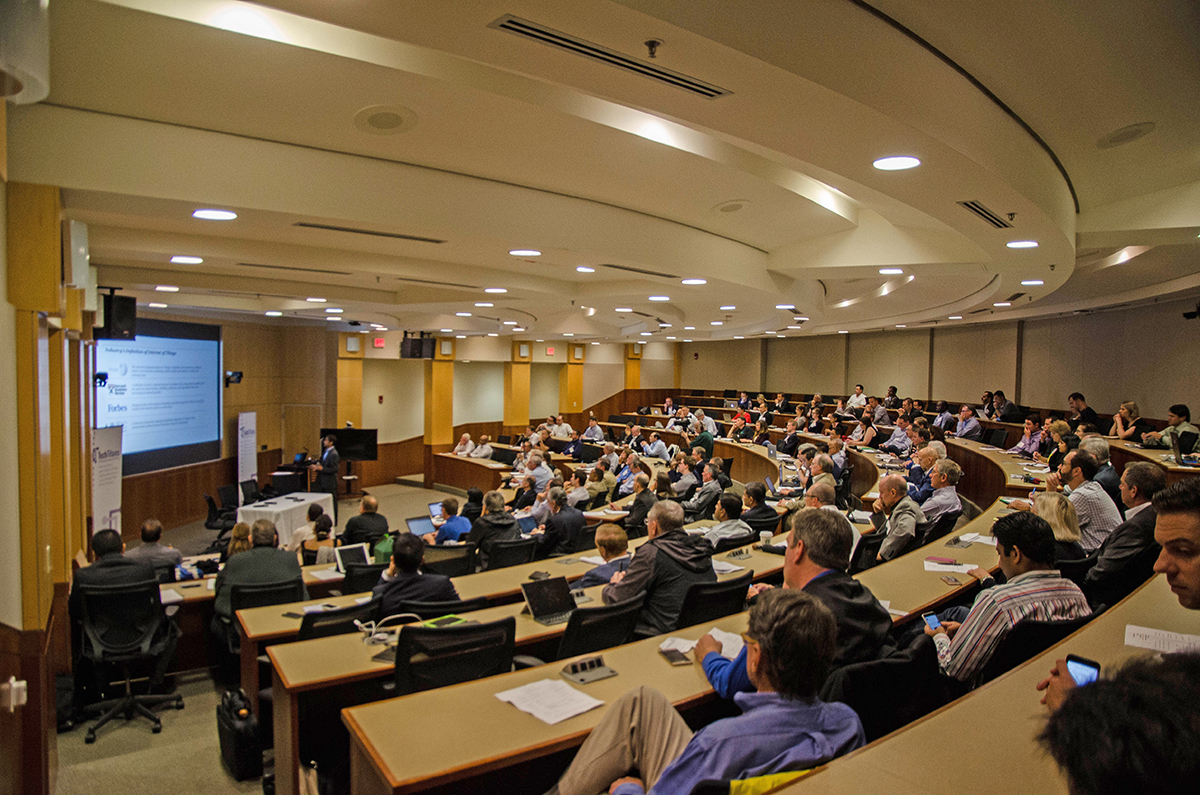
Jeremy Vickers starts off Tech Titans Reverse Pitch Event by talking about entrepreneurship at UT Dallas. Photo by Hannah Ridings.
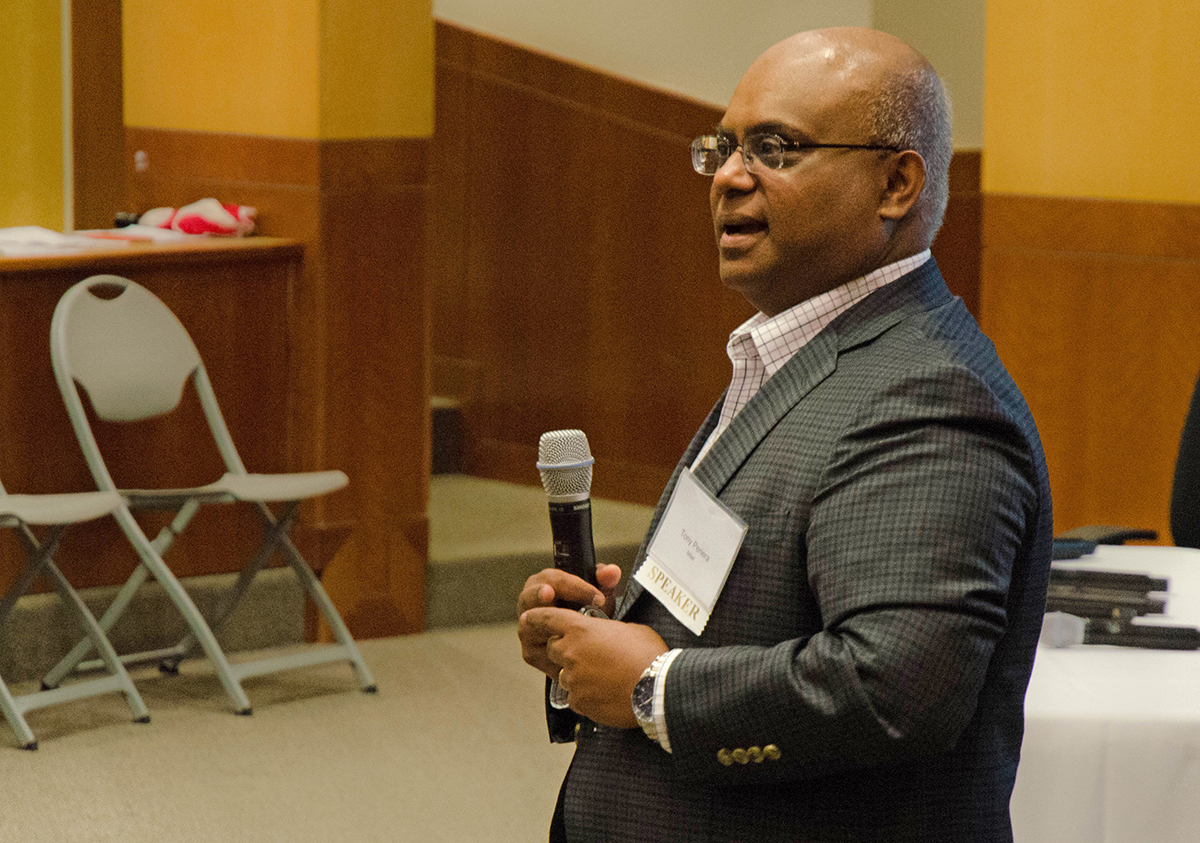
Ricardo Angel, managing director at GE Ventures speaks at Tech Titans Reverse Pitch Event. Photo by Hannah Ridings.

Ricardo Angel, managing director at GE Ventures speaks at Tech Titans Reverse Pitch Event. Photo by Hannah Ridings.
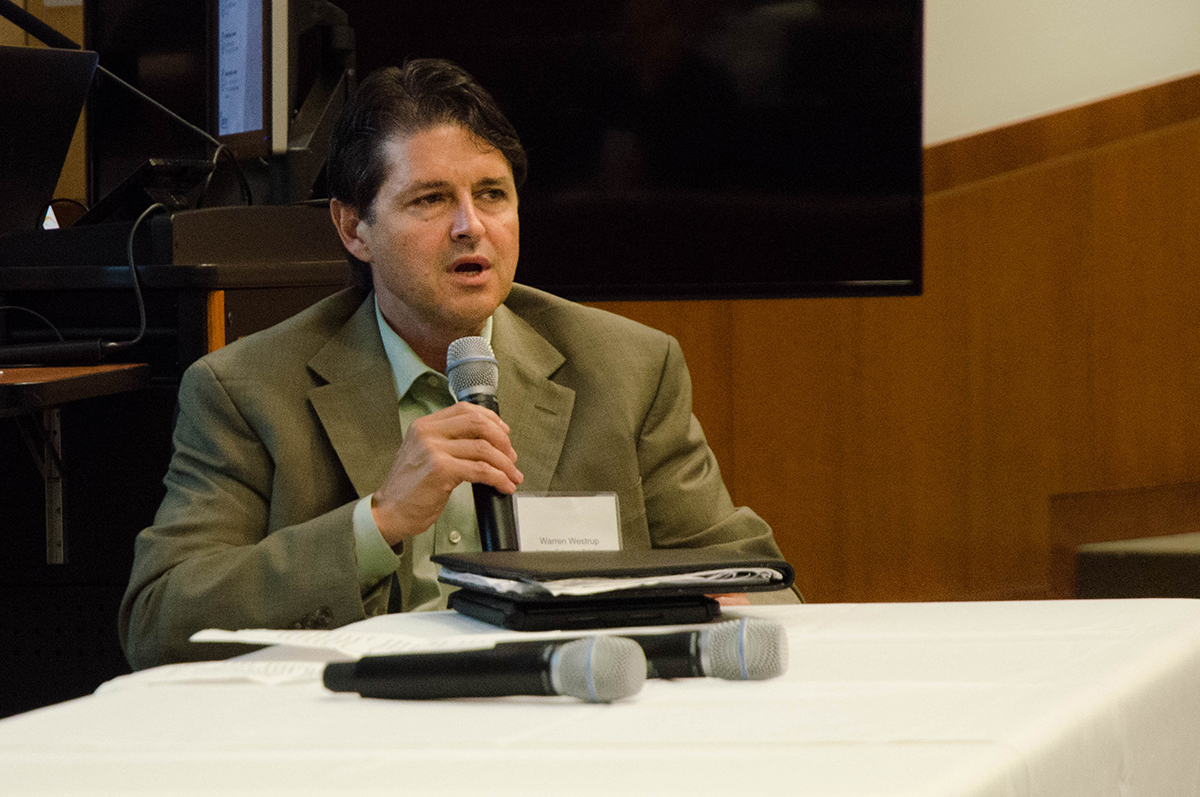
Warren Westrup speaks about Dallas startups at the Tech Titans Event hosted by UT Dallas. Photo by Hannah Ridings.

Audience members Brandon O’Halloran (right) and Josh Manley (middle) ask speaker Ray Bajaj about business between panels. Photo by Hannah Ridings.
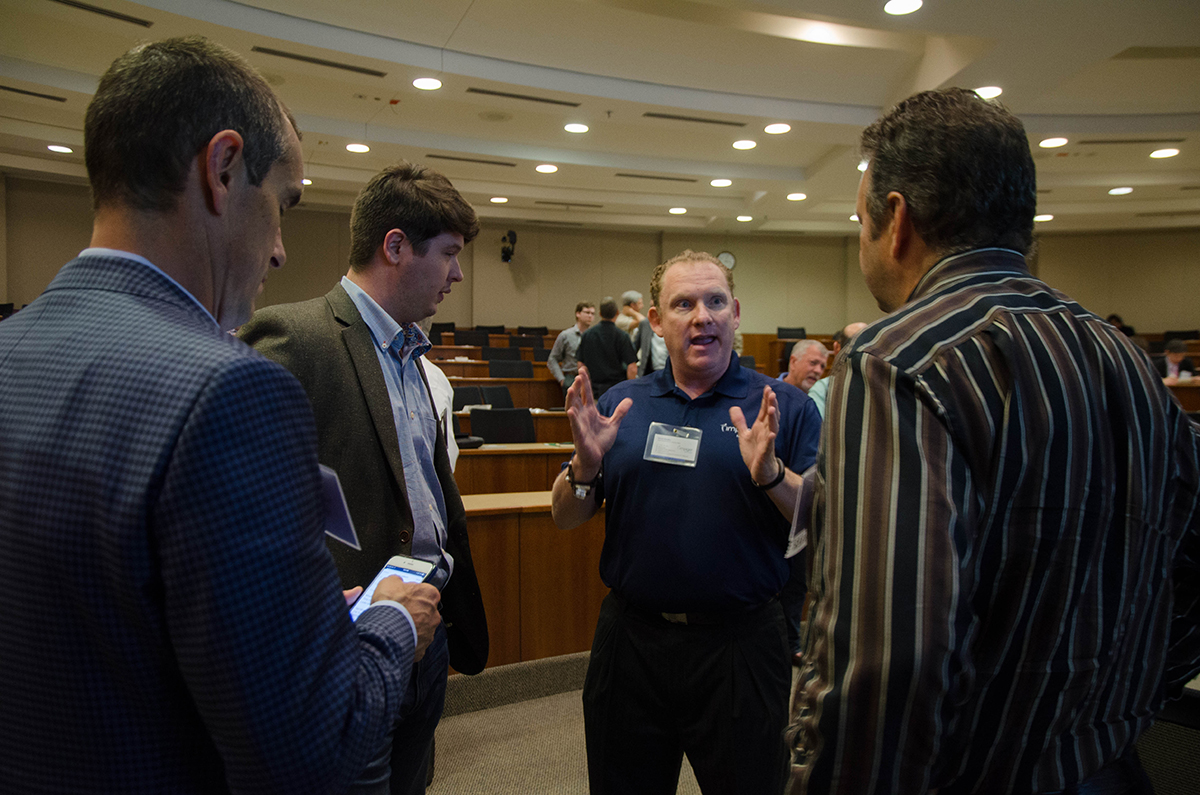
Tad Molntosh (middle) talks business with Moderator Bob Gessel (right) during networking hour at Tech Titans. Photo by Hannah Ridings.
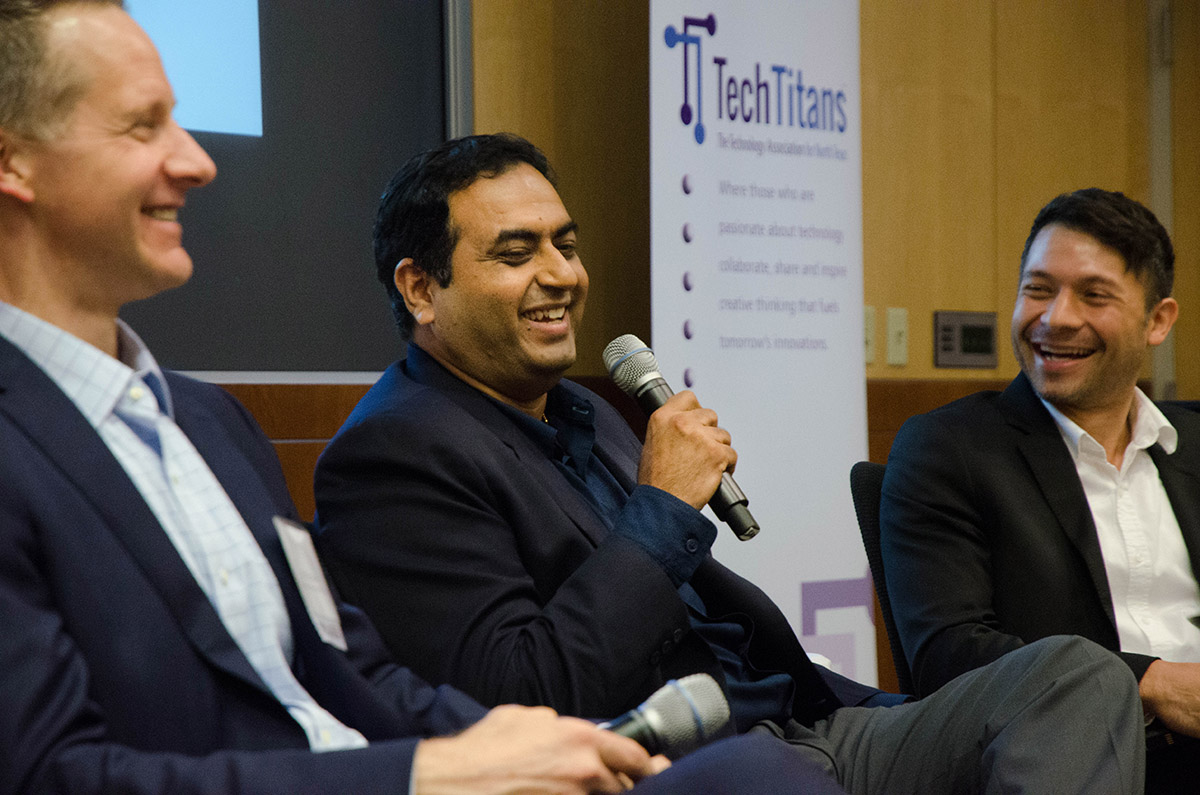
Ray Bajaj, a speaker at UT Dallas Tech Titans, jokes about building a tech mother who will know all the answers. Photo by Hannah Ridings.
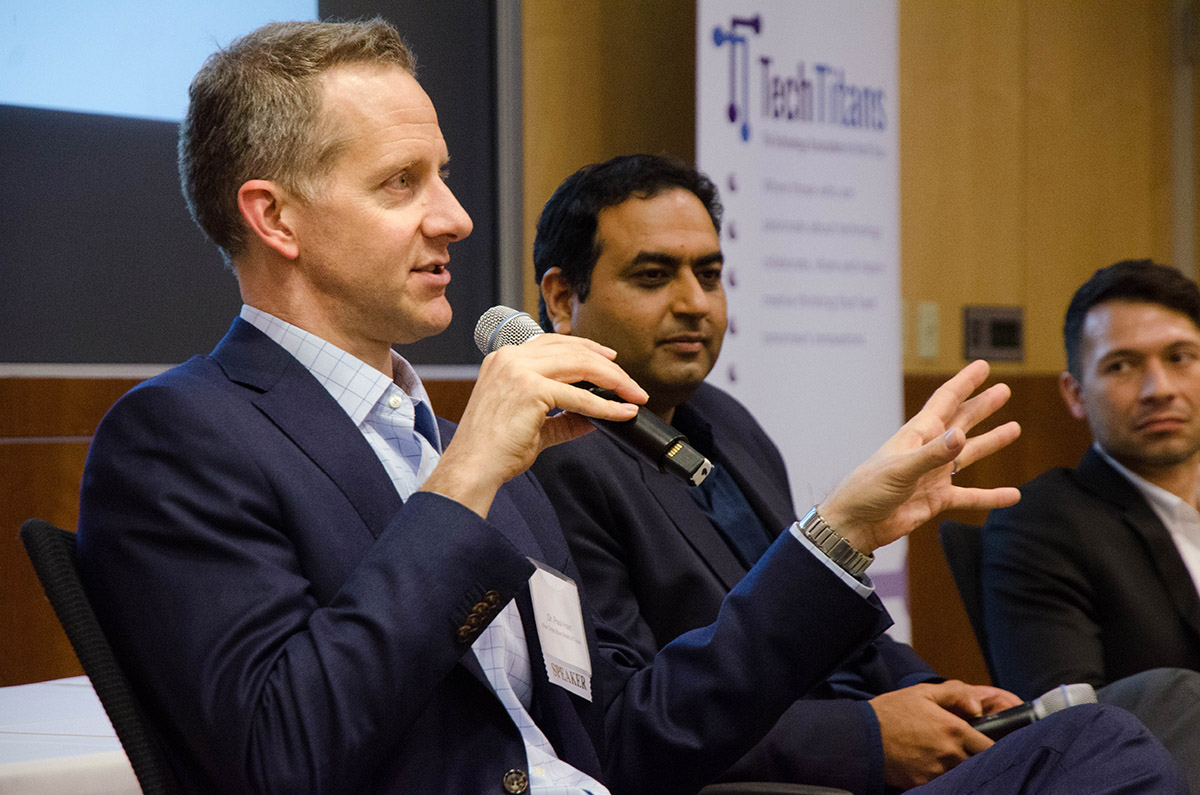
Dr. Paul Hain discusses the need of a new data system for health care providers at the UT Dallas Tech Titans Event. Photo by Hannah Ridings.
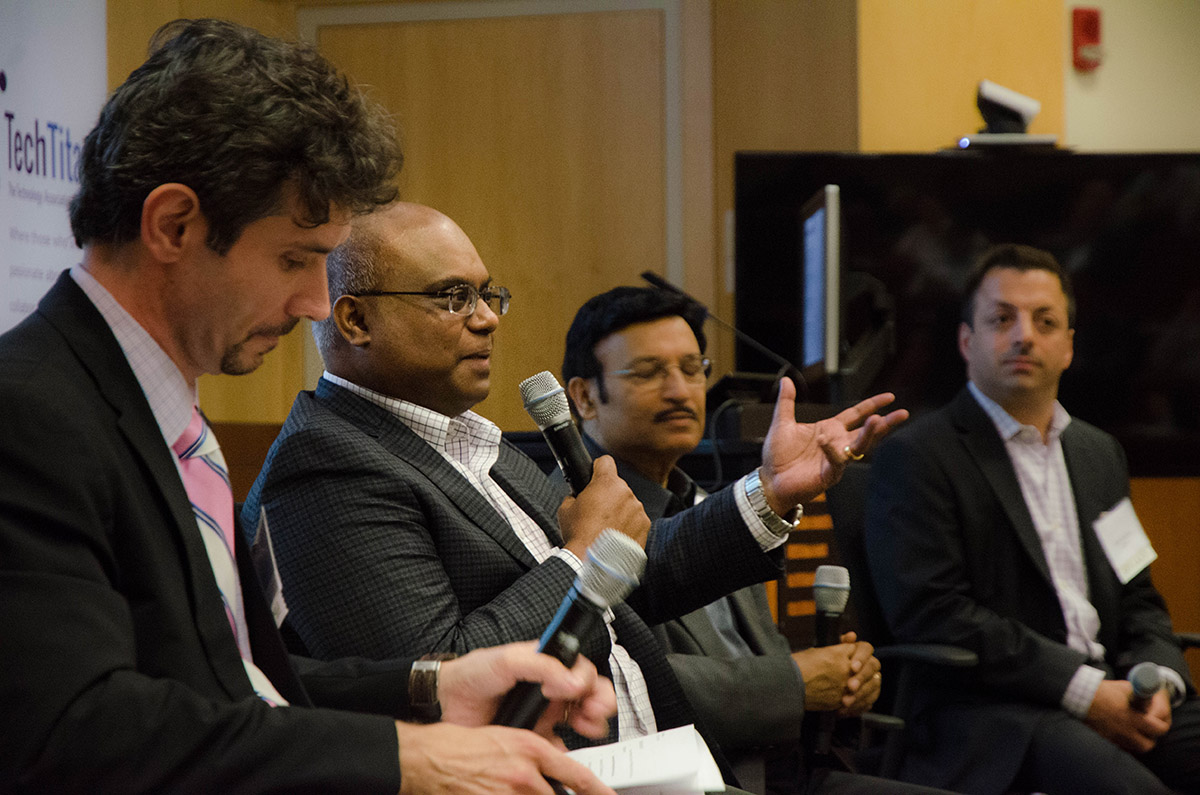
Ricardo Angel answers questions from the audience about how to be a successful startup business. Photo by Hannah Ridings.
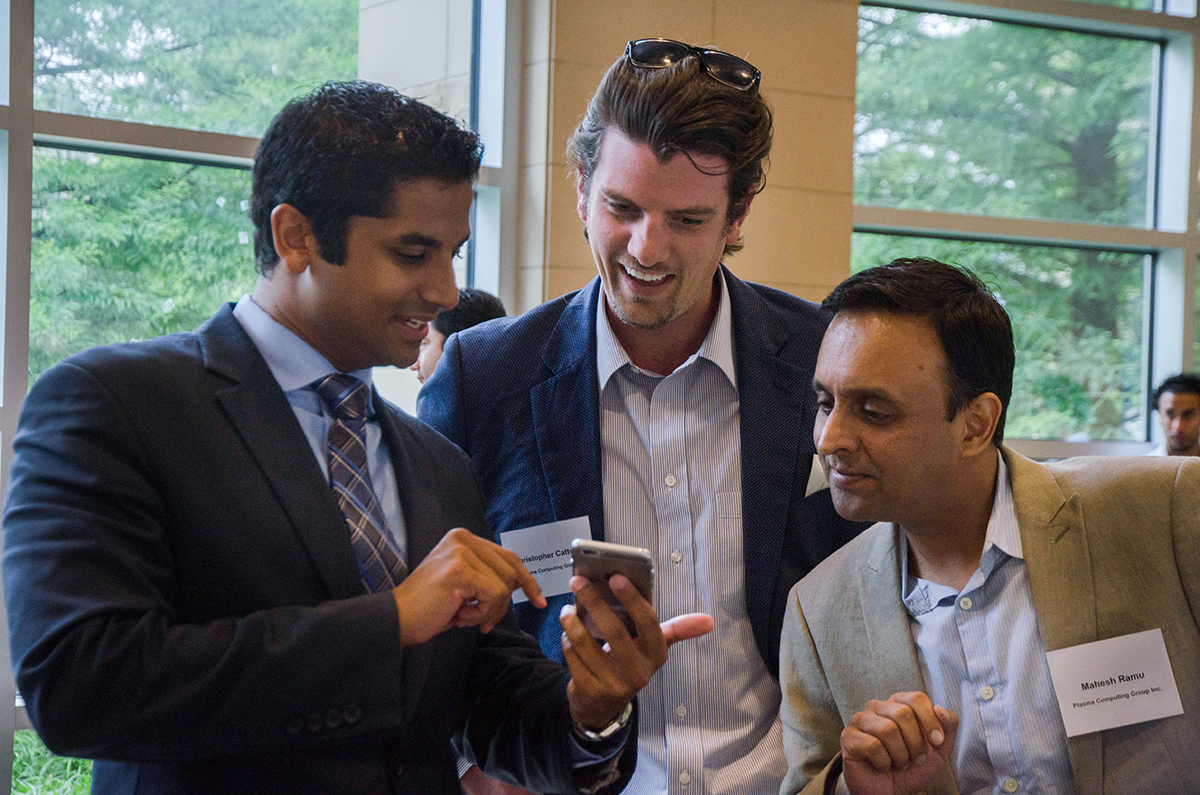
Chris Bhatti networks with fellow businessmen Christopher Cattertton and Mahesh Ramu at the UT Dallas Tech Titans Event. Photo by Hannah Ridings.
For a daily dose of what’s new and next in Dallas-Fort Worth innovation, subscribe to our Dallas Innovates e-newsletter.

